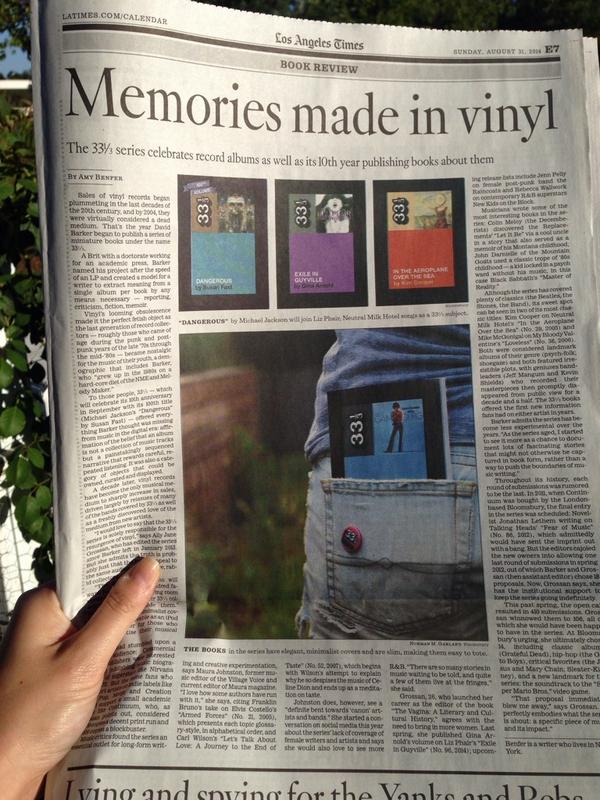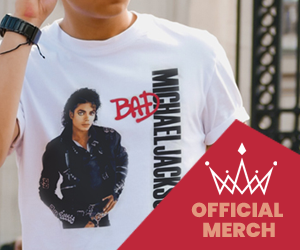
Sales of vinyl records began plummeting in the last decades of the 20th century, and by 2004, they were virtually considered a dead medium. That’s the year David Barker began to publish a series of miniature books under the name 33 1/3.
A Brit with a doctorate working for an academic press, Barker named his project after the speed of an LP and created a model for a writer to extract meaning from a single album per book by any means necessary — reporting, criticism, fiction, memoir.
Vinyl’s looming obsolescence made it the perfect fetish object as the last generation of record collectors — roughly those who came of age during the punk and post-punk years of the late ’70s through the mid-’80s — became nostalgic for the music of their youth, a demographic that includes Barker, who “grew up in the 1980s on a hard-core diet of the NME and Melody Maker.”
To those people, 33 1/3 — which will celebrate its 10th anniversary in September with its 100th title (Michael Jackson’s “Dangerous” by Susan Fast) — offered everything Barker thought was missing from music in the digital era: affirmation of the belief that an album is not a collection of music tracks but a painstakingly sequenced narrative that rewards careful, repeated listening. It was also a category of objects that could be owned, curated and displayed.
A decade later, vinyl records have become the only musical medium to sharply increase in sales, driven largely by reissues of many of the bands covered by 33 1/3 as well as a freshly discovered love of the medium from a new generation of artists.
“I would love to say that the 33 1/3 series is solely responsible for the resurgence of vinyl,” says Ally Jane Grossan, who has edited the series since Barker left in January 2013.
But she admits the truth is probably just that the books appeal to the same audience: obsessive, rabid collectors. “The same person who will want to display their hundred favorite records in their living room will want to display their 33 1/3 collection right alongside them.” Slim, with elegant, minimalist covers, they are as portable as an iPod and much cooler for those who wish to advertise their musical tastes.
Barker had stumbled upon a built-in audience: Commercial trade publishers were interested only in publishing music biographies of superstars like Nirvana and U2. But the same fans who support artists on indie labels like Sub Pop, Merge and Creation could support a small academic press like Continuum, who, as Grossan points out, considered 10,000 copies a decent print run and 20,000 copies a blockbuster.
Music critics found the series an essential outlet for long-form writing and creative experimentation, says Maura Johnston, former music editor of the Village Voice and current editor of Maura magazine. “I love how some authors have run with it,” she says, citing Franklin Bruno’s take on Elvis Costello’s “Armed Forces” (No. 21, 2005), which presents each topic glossary-style, in alphabetical order, and Carl Wilson’s “Let’s Talk About Love: A Journey to the End of Taste” (No. 52, 2007), which begins with Wilson’s attempt to explain why he so despises the music of Celine Dion and ends up as a meditation on taste.
Johnston does, however, see a “definite bent towards ‘canon’ artists and bands.” She started a conversation on social media this year about the series’ lack of coverage of female writers and artists and says she would also love to see more R&B. “There are so many stories in music waiting to be told, and quite a few of them live at the fringes,” she said.
Music critics found the series an essential outlet for long-form writing and creative experimentation, says Maura Johnston, former music editor of the Village Voice and current editor of Maura magazine. “I love how some authors have run with it,” she says, citing Franklin Bruno’s take on Elvis Costello’s “Armed Forces” (No. 21, 2005), which presents each topic glossary-style, in alphabetical order, and Carl Wilson’s “Let’s Talk About Love: A Journey to the End of Taste” (No. 52, 2007), which begins with Wilson’s attempt to explain why he so despises the music of Celine Dion and ends up as a meditation on taste.
Johnston does, however, see a “definite bent towards ‘canon’ artists and bands.” She started a conversation on social media this year about the series’ lack of coverage of female writers and artists and says she would also love to see more R&B. “There are so many stories in music waiting to be told, and quite a few of them live at the fringes,” she said.
SOURCE: LA Time & All Things Michael




